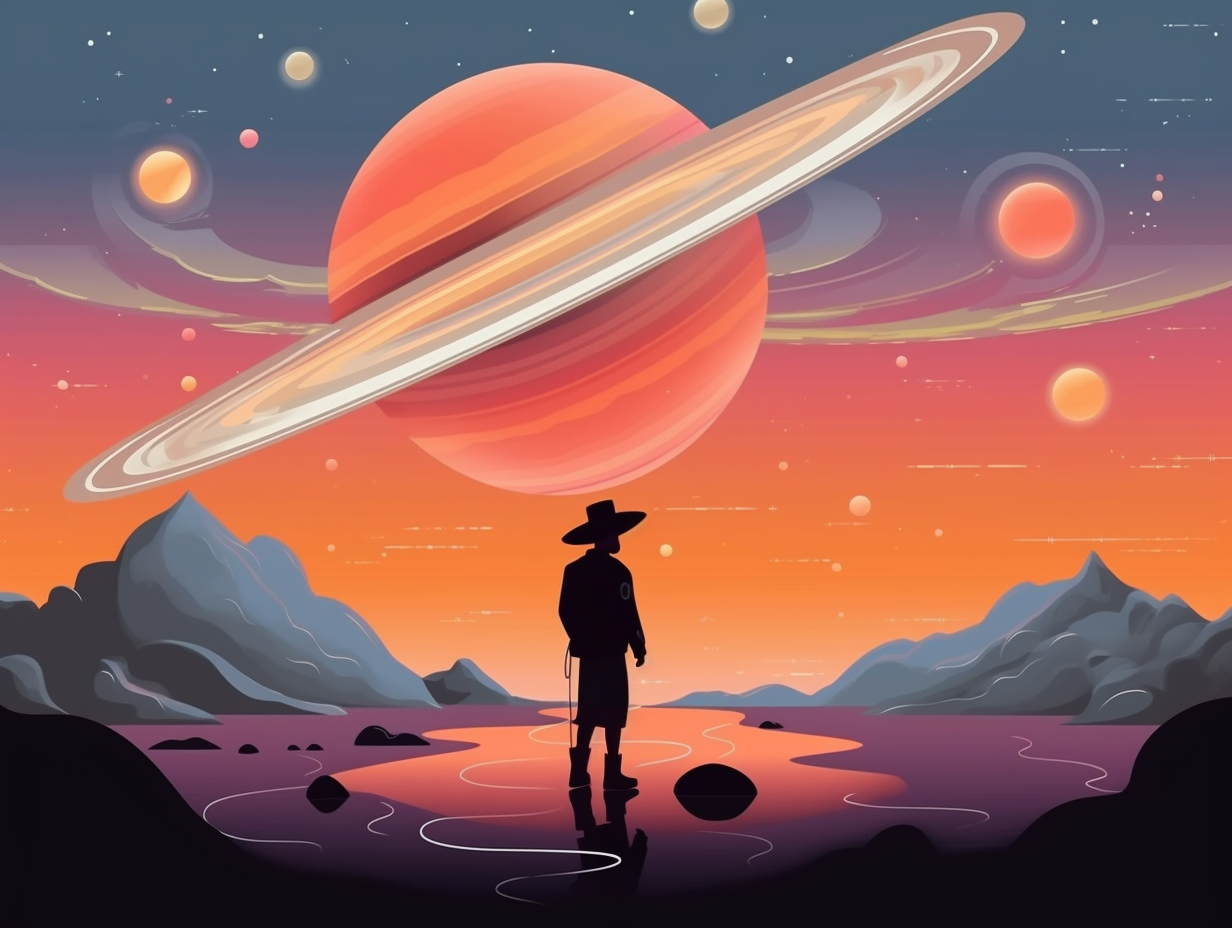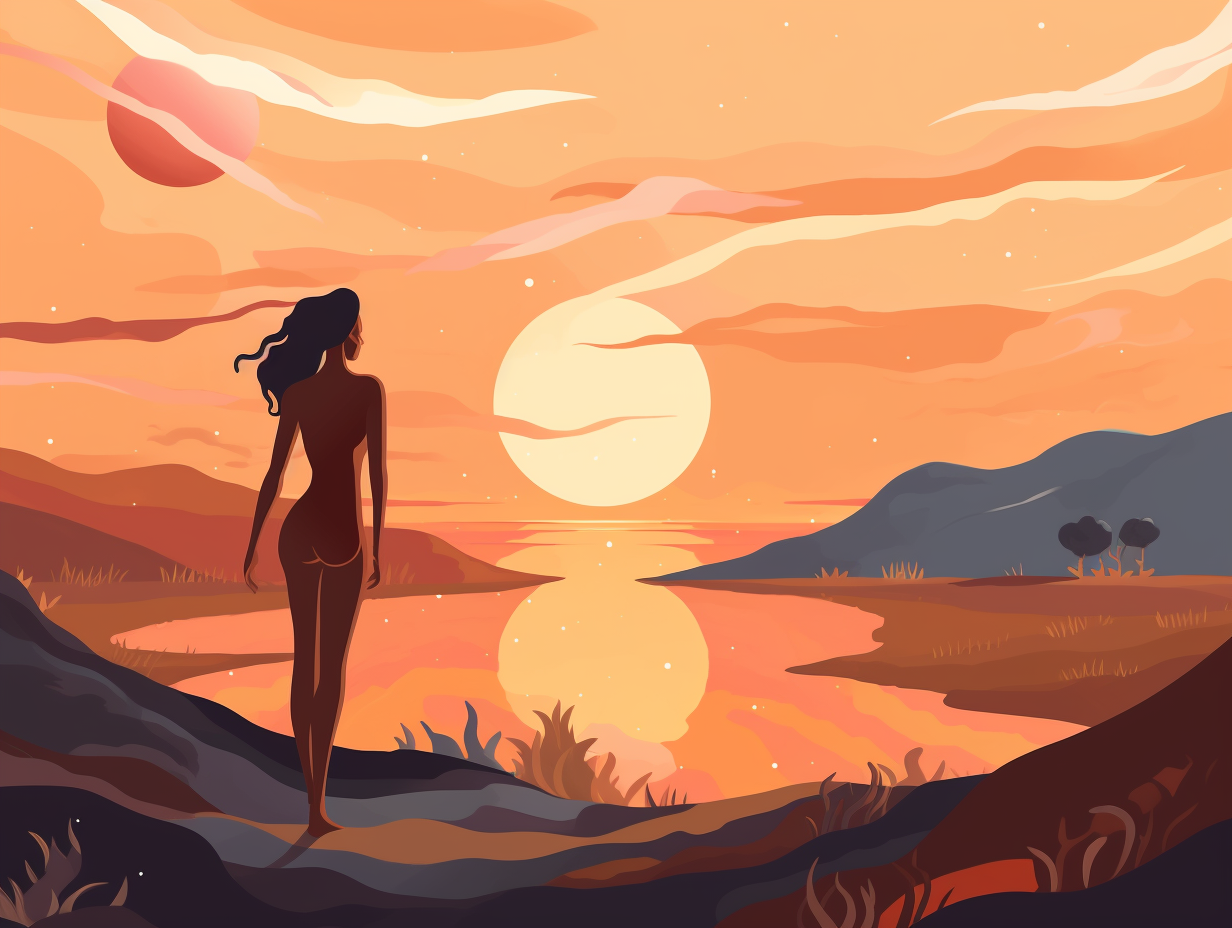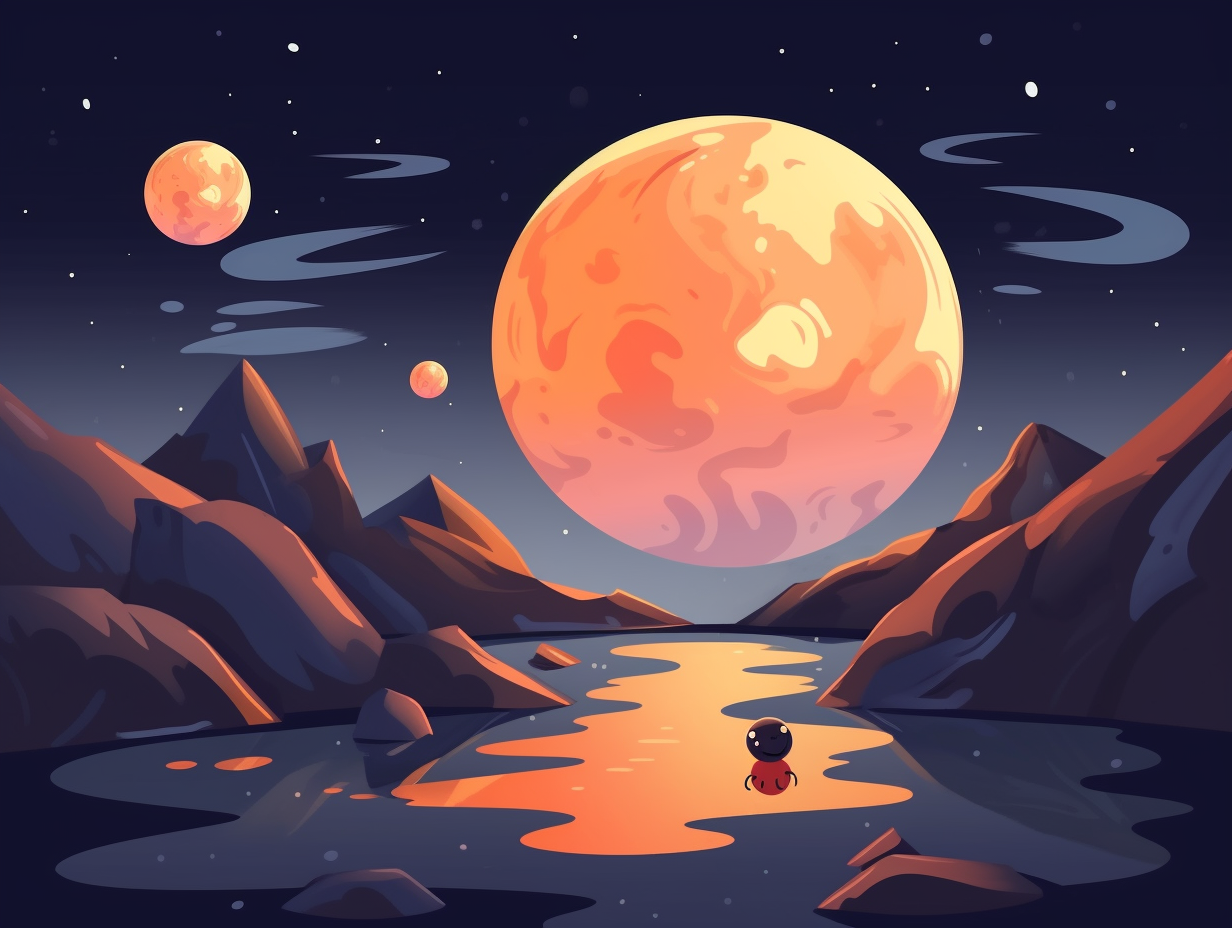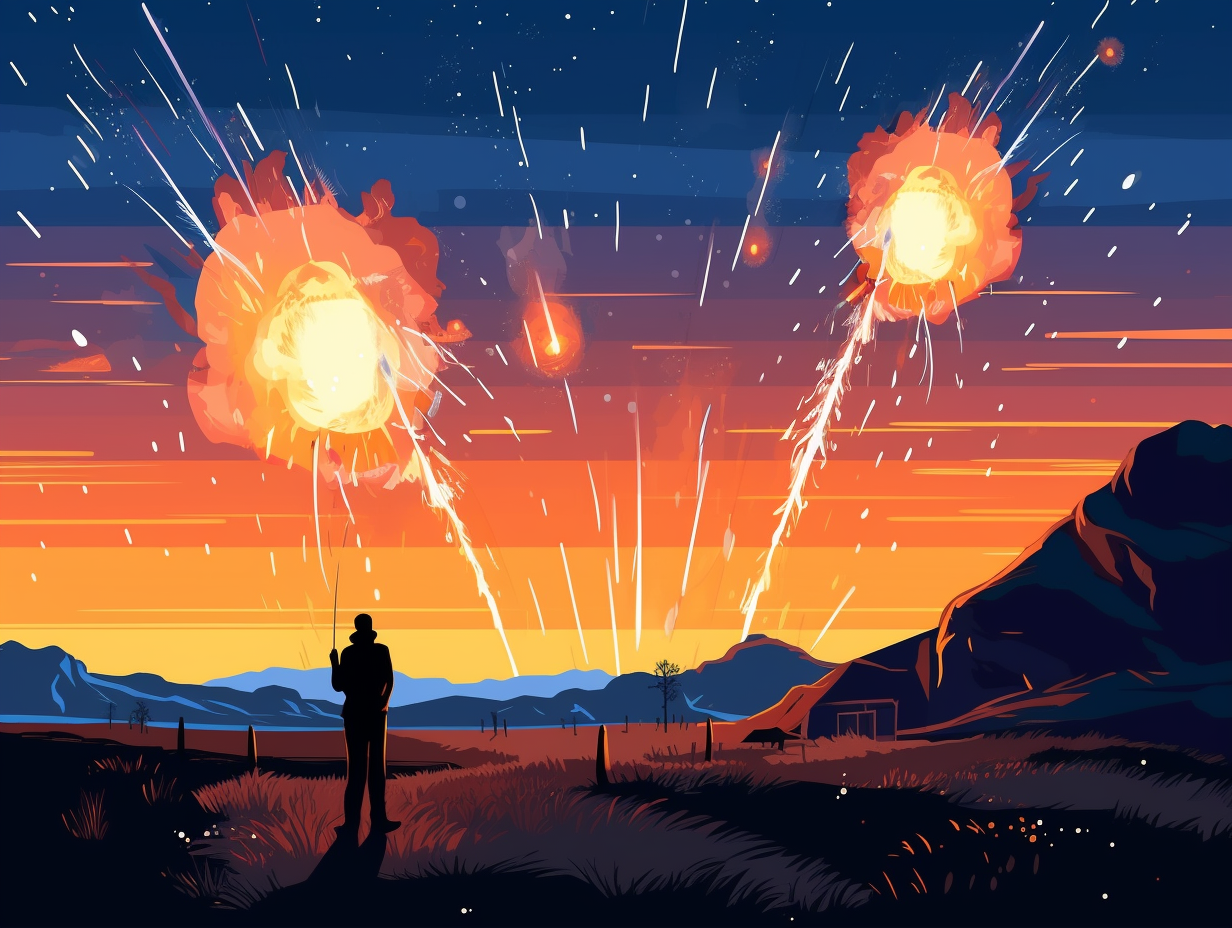29 Captivating Fun Facts About the Moon: Uncover the Wonderland in Our Skies

1. Moon Hopping for Bone Health
Moonwalking isn't just for Michael Jackson impersonators anymore: Astronauts may be able to boost bone and muscle health by simply bouncing on the moon's surface, as ESA's European Astronaut Centre discovers that hopping might be an effective way to prevent physiological deconditioning during lunar habitation.
Source => esa.int
2. Lunar Laser Ranging Precision
Taking aim at astronomical proportions: Apollo mission astronauts left retroreflector arrays on the Moon that are used for Lunar Laser Ranging since 1969, making it like hitting a moving dime from three kilometers away with a rifle. The array is so precise that only one photon out of 1021 aimed at the reflector is received back on Earth, creating one of the most accurate distance measurements ever made.
Source => en.wikipedia.org

Did you know that bread crumbs are a major threat in space? Discover how tortillas save the day on the ISS and learn about astronauts' unique taste bud adventures!
=> Fun Facts about Space
3. Moon's Roommate Drift
Talk about needing some space! The Moon is like that one roommate who's slowly and inconspicuously moving out, inch by inch, just to get a little breather: It's currently drifting away from Earth at a rate of 3.78 centimeters per year. Over billions of years, this could shake things up for life on Earth by causing our planet to slow down, but hey, we might have some cool moon-adapting technology by then!
Source => bbc.com
4. Cosmic Tug-of-War Tides
When the moon and Sun can't decide who's got the bigger pull in our cosmic tug-of-war, they call on Mother Earth to give them some space and make waves: Both the moon's and the Sun's gravitational forces affect Earth's tides, resulting in more extreme tides called spring tides during full moon or new moon, and smaller tides called neap tides when their forces counteract. Winds and weather patterns, of course, also meddle in this watery feud.
Source => scijinks.gov

5. Exclusive Large Moon Club
Moonwalking in exclusive company: Only 8 percent of planetary systems in the cosmos can brag about having a large moon like Earth's, which formed from a rare planetary collision, and is instrumental in stabilizing the planet's axial tilt.
Source => space.com
6. Synchronous Rotation Peekaboo
For those avid moon watchers lamenting their never-ending game of peekaboo with the same side of our nightly neighbor, here's why the universe may have dished you a "Rocky Relationship": The moon's synchronous rotation keeps the familiar near side facing Earth, as it takes around 27 days to both rotate and orbit our planet. Yet, fear not, curious stargazers! We do occasionally get to sneak a glimpse of an extra 8 degrees on either side, all thanks to the mismatched dance between orbit and rotation.
Source => space.com
7. Moon's Asteroid Makeover
When the Moon got its ultimate facelift, it went a bit crazy on the nearside Botox: 4 billion years ago, a huge asteroid collision formed the South Pole-Aitken Basin, the Moon's largest and oldest impact basin, leading to lava flows on the nearside that filled older craters and concentrated rare-Earth and heat-producing elements – talk about a smashing makeover!
Source => blog.byjus.com
8. Lunar Libration Fan Dance
What does the moon and a coy "moondancer" have in common? They both show off about 59% of their goods while keeping the rest mysteriously hidden: The phenomenon called lunar libration varies the moon's distance from Earth throughout the year, allowing us to witness approximately 59% of its surface, like a sultry celestial fan dance revealing new details with every passing night.
Source => space.com
9. Polar Water Ice Surprise
Moon's pole-tergeist may not be a horror movie franchise, but it surely has some chill(y) surprises up its sleeve: Water ice has been found lurking in the permanently shadowed craters at the lunar poles – presenting a spooky-good cache of potential life-support resources like air, drinking water, and rocket fuel, and possibly even clues to the origins of Earth's H2O!
Source => planetary.org

10. Lunar Explorer Fashion
Who said you can't take a brisk walk on the sizzling side of the Moon? Clearly not the Apollo astronauts, chasing lunar sunrises to beat the scorching rays: The lunar explorers strategically landed during the Moon's dawn, dodging daytime temperatures of up to 200°C (392°F). They were also equipped with ultra-reflective spacesuits, bouncing off 90% of the Sun's radiation, while the regolith beneath their boots did a poor job of conducting heat, much like Earth's most respectable thermos flasks.
Source => spaceanswers.com
11. Bright Full Moon Disco
Lunacy in the cosmos: Are you just feeling a little extra moo-dy, or is your neighbor's lunar lawn party getting out of hand? Fear not, for it might just be a full moon lighting up the dance floor! Funnily enough, a full moon can appear up to six times brighter than during its first or last quarter crescent phases, all thanks to the celestial hokey pokey of sunlight angles. However, don't expect a lunar tan anytime soon – the moon is still 400,000 times dimmer than the sun, and its disco-ball-esque brightness is being studied by the National Institute of Standards and Technology for calibrating Earth-observing satellites.
Source => skyandtelescope.org
12. Selene, The Chariot Queen
Before GPS, Moongle Maps was all the rage when the original Chariot Queen, Selene, was cruising the night sky, making crescent-shaped U-turns while turning on her bull horns for some extra swagger: In Greek mythology, Selene, the Titan goddess of the moon, was often depicted galloping on horseback or driving a chariot drawn by winged steeds, with her lunar crescent emblem occasionally being likened to the horns of a bull.
Source => theoi.com
13. Tardigrade Cannon Launch
When life gives you tardigrades, launch them from a cannon: These microscopic water bears can survive speeds of up to 900 meters per second, only sustaining internal damage, thanks to their unique ability to hibernate for decades, endure extreme temperatures and pressures, and even roll into lifeless balls called tuns.
Source => microbiologyonline.ifas.ufl.edu
14. Moon's Record-Setting Party
When the Moon decided to throw a party, it really went the extra mile – or should we say 238,900 miles? – to ensure it was one for the planetary record books: On July 27, 2018, the Earth bore witness to the longest total lunar eclipse of the 21st century, clocking in at a dazzling 1 hour and 42.955 minutes, while Mars RSVP'd with an especially close appearance, a celestial plus-one affair that only happens once every 25,000 years!
Source => en.wikipedia.org

15. Walking the Lunar Circumference
Ready for a lunar stroll that would put Forrest Gump's cross-country sprint to shame? Hold onto your cosmic boots, because: the moon's equatorial circumference is 6,783.5 miles (10,917 km), which means walking around it would be like traversing the United States from coast to coast!
Source => space.com
16. Total Eclipse Moon Fashion
Say goodbye to the blues, and hello to the reds: During a total lunar eclipse, the Moon sports a fashionable reddish-orange hue thanks to a phenomenon called Rayleigh scattering, caused by Earth's atmosphere filtering out the shorter wavelength colors, such as blue and violet. The shade of red the Moon struts varies based on the current atmospheric factors like dust particles, water droplets, clouds, and mist. If we were to attend this lunar fashion show from the Moon itself, Earth would be glamorously accessorized with a vibrant red ring, courtesy of all the sunrises and sunsets happening simultaneously.
Source => timeanddate.com
17. Crunchy Mooncake Surface
If the moon were a bakery, it'd be serving up layers of extra crunchy mooncakes for eons: Lunar regolith covers almost the entire surface of the moon, formed over billions of years by meteorite impacts, and providing a powdery yet firm foundation for our lunar expeditions. Just don't breathe in the mooncake dust!
Source => phys.org
18. Moon's Star Obstruction Talent
Feeling loony with a touch of lunar wanderlust? The moon's stellar game of hide and seek may just be the thing for you: Shifting approximately 13 degrees eastward daily, the moon's varying visibility and star-obstructing potential create a unique astronomical tapestry each night!
Source => actionnews5.com
19. South Pole-Aitken Basin Party
Ever wondered if the Moon has a hidden side: like a cosmic mullet, business in the front, party in the back? Feast your eyes on the South Pole-Aitken Basin: A colossal 1,600-mile-wide lunar crater that's deeper than the Mariana Trench, and so ancient, it could've been the universe's first DJ, spinning tracks 4.3 billion years ago. It's a moondopolis of extremes, with staggering heights and depths, and a crust that's like a paper-thin cosmic pizza, without the extra cheese.
Source => en.wikipedia.org
20. Tidal Lock Face Reveal
Playing peekaboo with our lunar friend: the moon is tidally locked to Earth, constantly revealing only one side of its face to us due to gravitational interactions – a cosmic dance shared by Jupiter and Saturn's major moons, and the Pluto-Charon duo.
Source => phys.org
21. Moon's Earthshine Catwalk
Ever wondered if the moon secretly moonlights as an exoplanet fashionista, patiently waiting for the perfect Earthly glow to flaunt its latest cosmic couture? Well, turns out it does!: Earthshine on the moon's surface involves sunlight reflecting off the Earth, illuminating its lunar visage. This reflected light is altered, creating rainbows and polarization, which enables astronomers to study it for potential signs of life. Now that's how you work that space catwalk!
Source => eso.org
22. Moon’s Galactic Mate Status
Oh moon, where art thou? Riding high up in your celestial chariot, boasting your status as Earth's favorite "galatic mate" and getting all the attention since 1969: The moon holds the record for being the largest natural satellite in relation to its host planet and is a whopping quarter of Earth's size, making it the celestial envy of other large moons in the solar system.
Source => wondriumdaily.com
23. Lunar Seas Gossip
If moon dust could talk, it would have plenty to gossip about on those lunar "seas" that aren't the sailors' paradise they sound like: In reality, these large basaltic plains, called lunar maria, formed by ancient asteroid impacts triggering volcanic activity, cover 16% of the Moon's surface and date back 1.2 to 4.2 billion years old. Their dark appearance is due to iron-rich content and not wetness, making them solid rock formations rather than the cosmic beachfront property one might have hoped for.
Source => en.wikipedia.org
24. Moon's Sky Brightness Control
If you find yourself moonstruck, don't worry about things taking a dark turn anytime soon: The Moon can affect the sky's brightness significantly, as during a full Moon, it can be several times brighter near it than on the opposite side of the sky, while first and last quarter phases make the sky merely a tenth as bright – darker than any spot within 40 miles of Boston's bustling center.
Source => skyandtelescope.org
25. Earth-Moon Celestial Dance
Moonwalk with me, earthlings: In a cosmic do-si-do, the Earth and Moon are constantly swingin' around a shared center of gravity called their barycenter about 1000 miles (1700 km) beneath our feet. This gravitational tug-of-war doesn't discriminate; the Sun and all its celestial fans are in on it too, as their movements cause their barycenter to wander like a celestial hokey pokey.
Source => education.com
26. Lunar Drift Away Drama
In a gravitational game of "don't let go, Jack!", it seems that the Moon is playing hard to get and slowly letting go of Earth's grasp: As a result of tidal forces, the Moon is drifting away from our beloved planet at a rate of approximately 3.8 centimeters per year, leading to the possibility of smaller lunar appearances in the sky and the eventual loss of total solar eclipses.
Source => sciencefocus.com
27. Apollo 11 Social Distancing
Houston always gets the credit, but Neil and Buzz were the ultimate social distancers: The Apollo 11 mission not only made history as the first manned mission to touch down on the Moon but also clocked in as humanity's first interstellar escape from low Earth orbit.
Source => en.wikipedia.org
28. Isle of Rum Moon Rock Stabilizer
Brace yourself, moonwalkers, for the Isle of Rum has got nothing on the Moon's rocks and their role in a critically acclaimed thriller called Earth's stable climate: The lunar anorthosite rock, also found on a Scottish isle, plays a pivotal role in stabilizing not only Earth's orbit but also our planet's climate—setting the stage for life itself.
Source => nhm.ac.uk
29. Shoot for the Lifesaver Moon
Next time you hear someone say "shoot for the moon, even if you miss, you'll land among the stars," remind them that it's the moon that's really got Earth's back: Its gravitational pull stabilizes our planet's axial tilt, resulting in a steady climate that has allowed life to flourish for billions of years.
Source => calendar.com
Related Fun Facts




















